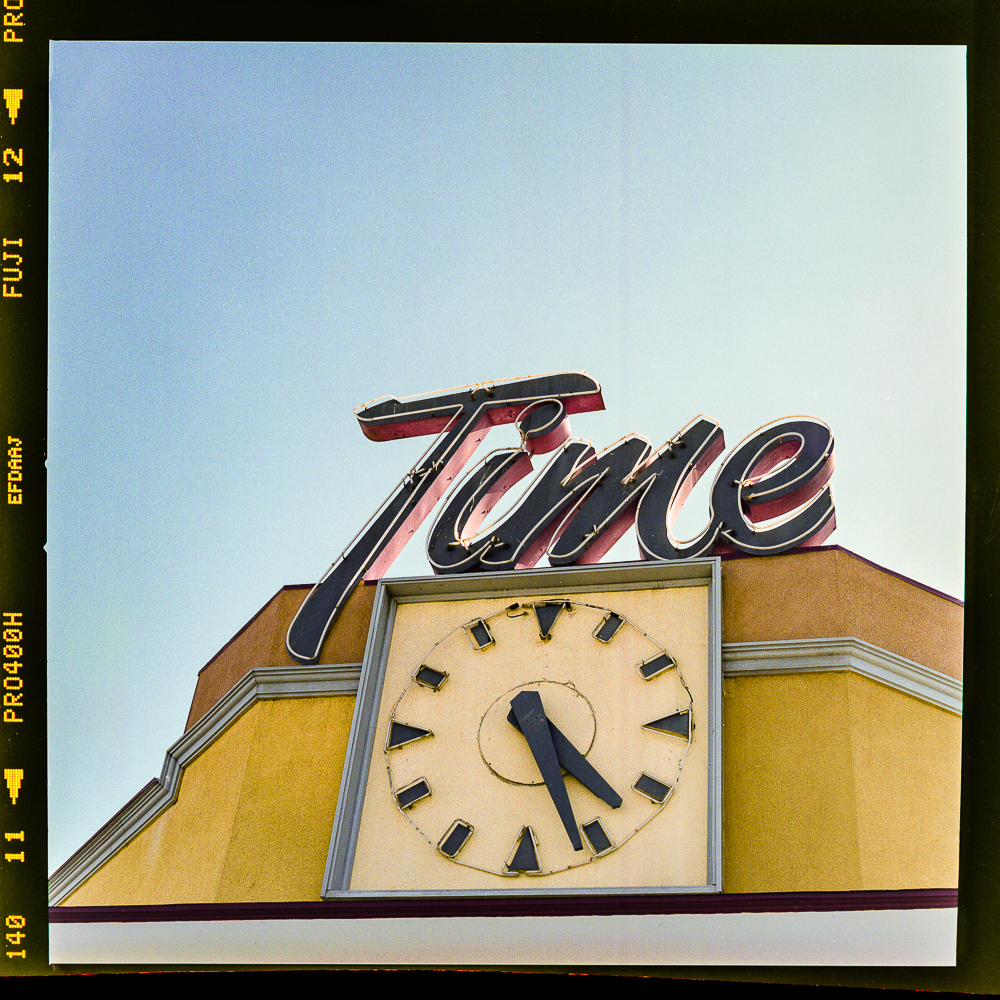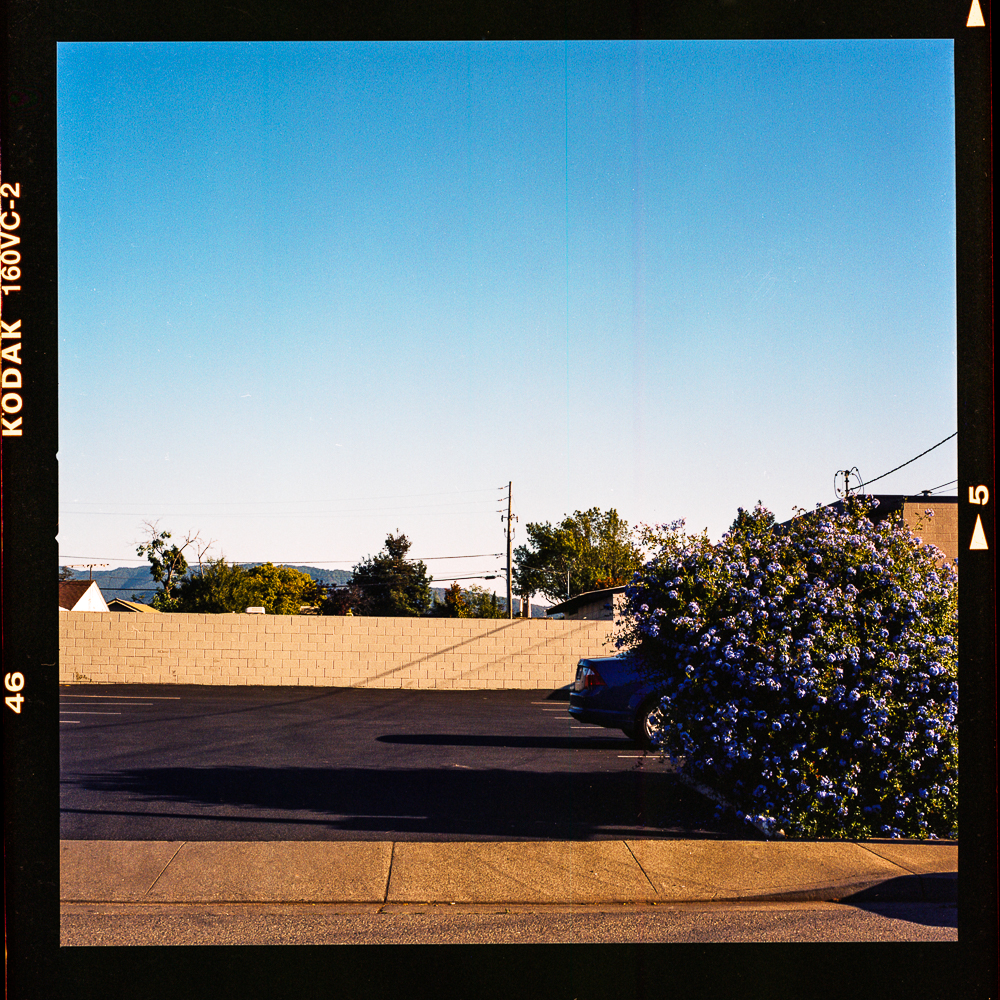San José, California is the Capital of Silicon valley but it was once referred to as the Valley of the Hearts Delight. The later moniker speaks to the history of San José, which is that of an incredibly rich farming region. During the 1950s and ‘60s San José’s population grew nearly ten times in size, transforming farmland into high-tech firms.
Given San José’s contributions to inventing technologies that change culture, politics, and governments it is thought of as a place that invents the future. However, this area has very few markers of its young history. This series aims to capture this transitional period through architecture when San José underwent rapid urbanization.
To accentuate feelings of the past I use the frame of the film stocks. Advancements in digital photography are a direct repercussion of the technologies built in Silicon Valley. The image as a product was once captured in crystals and celluloid, now it primarily exists as representation of software code. The physicality of the film serves as a reminder of San José’s roots.
amateur category
Valley of the Hearts Delight (Series)
DESCRIPTION
AUTHOR
Joshua Sariñana, PhD, explores the connections between the brain, art, and technology within a humanities framework, earning his neuroscience degrees from UCLA and MIT. His work seeks to blend and expand on these disciplines into new and dynamic interactions. His projects start with concepts informed by network theories, guiding and shaping his endeavors in art, science, and community engagement. He has been awarded multiple grants, including from the Massachusetts Arts Council and the Council for the Arts at MIT for his projects. Sariñana’s photography captures the transformation of mental representations, showcased in exhibitions, including at Aperture Gallery, FOCUS photo l.a., Photoville, and the Griffin Museum of Photography. He has also had solo exhibitions for his series Prosopagnosia, Image of Structure, and Mental Mapping. He has received accolades from the Sony World Photography Awards, Photolucida Critical Mass, and Latin American Fotografía, Sariñana’s photographic work has been featured by Apple and periodicals such as Black & White Magazine, Silvershotz, and BETA developments in photography. Sariñana is also a communications specialist, contributing to publications such as WIRED Magazine and MIT Technology Review and sharing his expertise with the Museum of Science, Boston, and for the Neurohumanities series at Trinity College, Dublin.
back to gallery







